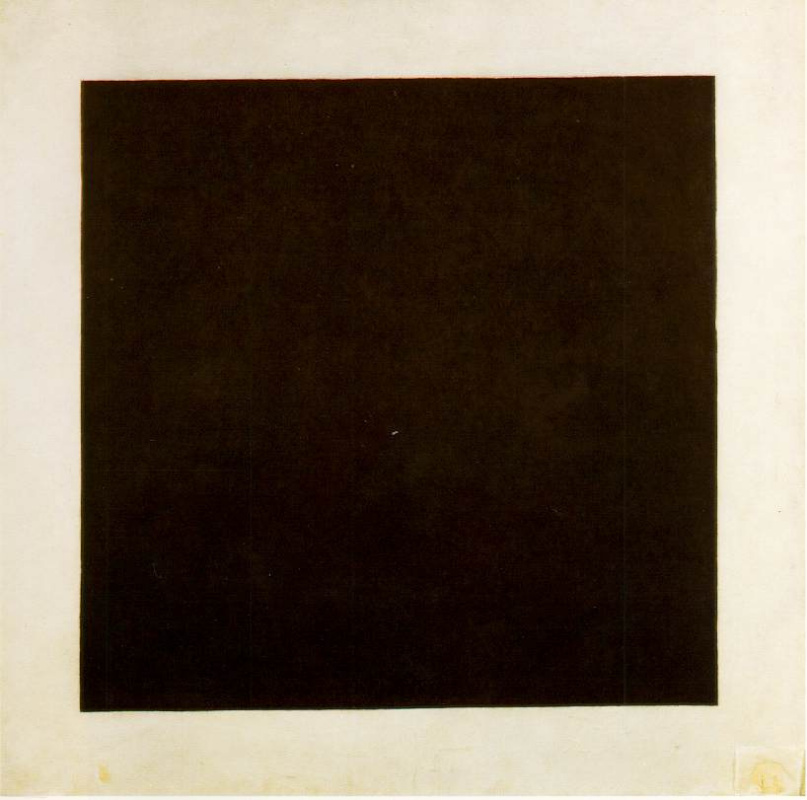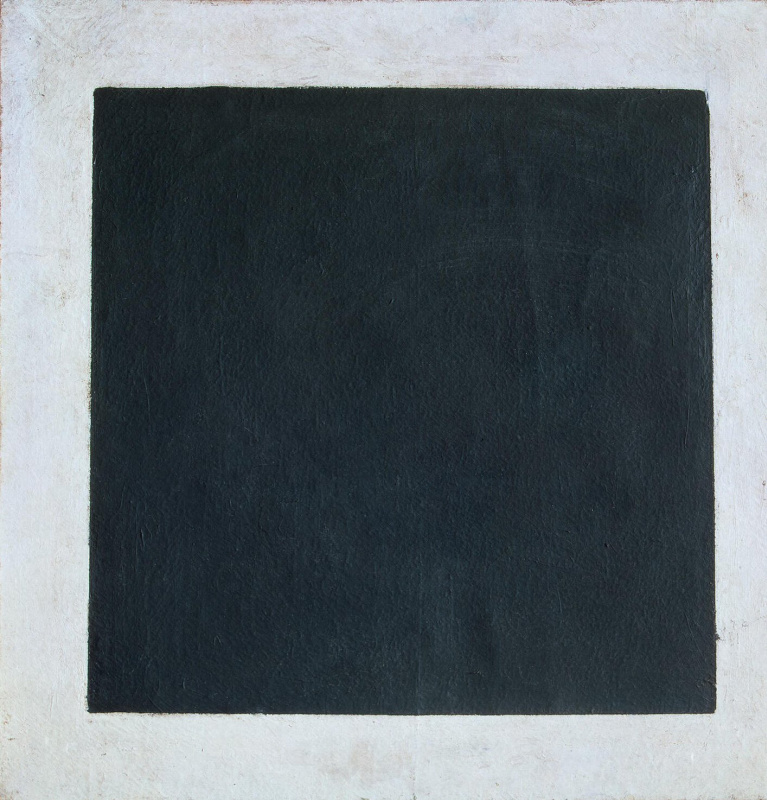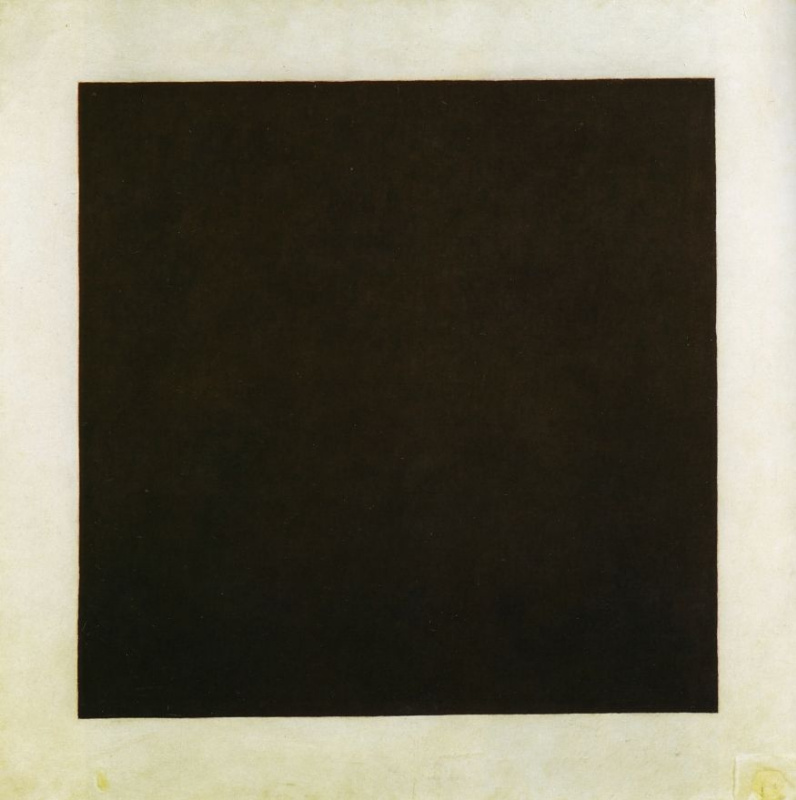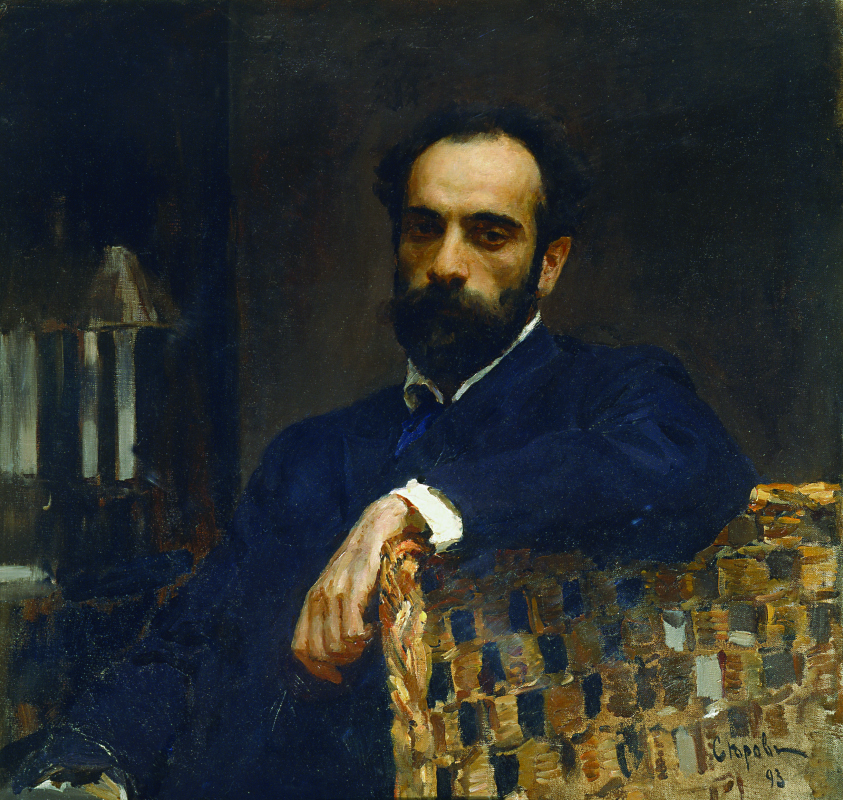The Black Square by Kazimir Malevich — as The Owls by David Lynch — is not what it seems. The admirers of The Black Square endue their favourite artwork with implications, meanings and notions Malevich was unaware of, they try to complicate what is really difficult. His opponents, on the contrary, simplify it beyond measure, refusing to notice the obvious. Probably, that is the reason of numerous widespread misconceptions. Let us begin from the point that The Black Square is not that black and not exactly square…
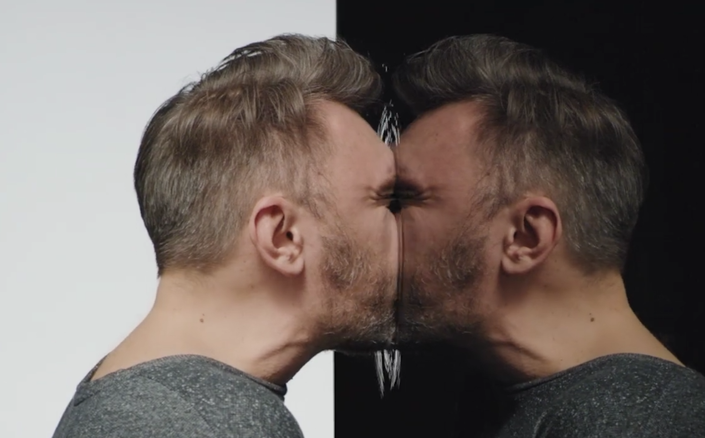
Black Suprematist square
1915, 79.5×79.5 cm
The Black Square is black
Today the conventional blackness of the most famous out of all squares by Malevich (presented to public in 1915, now in Tretyakov gallery) is visible with a naked eye. Through the cracelure net (cracks appearing on the surface of paint layer) pink, green, yellow pigments are grinned. As a result of X-ray and infra-red analysis conducted by the employees of Tretyakov gallery, quite a marvellous thing was found out: there are two — and not one — works by Malevich are hidden. It is hard to get to know now whether Malevich painted his "Square" on already painted canvas because he had no other canvas at hand, or it was done in order to attain the unique colour effect. However, the top black layer is also not that simple: Malevich used the paint of a special composition, made by himself. Mat and glossy paints are mixed up the way to get voluminous, velvet, "mysterious" and not fully homogeneous colour.
Paint layers found by the specialists of the Tretyakov gallery under the black square.
The Black Square is square
The Black Square painted in 1915 has side dimensions 79.5 cm. However, armed with exact measuring instruments, you will not find any in an image actually of square of not a single direct corner. It is not Malevich’s negligence, but his conscious decision — for this very reason in the catalogue the painting was initially titled as The Black Suprematic Square. Thus Malevich tried to create a flexible form possessing its own energy, equilibrium as well as paradoxical and illogical symmetry.The Black Square was created in 1913
We are obliged to Malevich for this (already not widespread nowadays) misconception: the artist dated his first "Black square" 1913. This time it was also done intentionally. It was not a single time that Malevich edited his artistic biography, he was inspired by two contradictory aspirations. On the one part, he wanted his artistic career to look like the evolution: a steady movement ahead from insignificant experiments in Impressionism or Cubism to the peak of Suprematism. On the other part, he tried to drag his suprematic works to an earlier period "without waiting in line", so that nobody could have doubts who was the discoverer and the revolutionary. In case with The Square the starting point for the artist was a futuristic opera "Victory over the Sun", as he did sceneries and costume sketches and the black square by Malevich (though another one) made its debut on the theatrical stage right in 1913.My son of five can paint it not worse
This simple statement often emerges with a layman (especially afterparty a portion of news from auctions), being really appropriate in relation to many works of contemporary art. But The Black Square by Malevich is categorically not the case. Besides coloristic features already described there is a phenomenon of "the master’s hand". The Bllack Square is not just painted out with a whitewashing brush. During the research the experts of Tretyakov gallery spotted vertical, horizontal, diagonal, rounded — most various and intricate strokes typical of Malevich style. One should remember about the artist’s fabulous charisma and his mystical philosophy providing The Black Square with the outlines of modern mythologema and its special emanations. To sum up don’t lend yourself to illusory hopes. Your son of five is not likely to make it.The Black Square can be forged easily
Talking about the son of five, there often appears uncle Vasya; you might have heard a joke: "The Black Square by Malevich had been stolen from the museum for the fifth time, and for the fifth time the museum guard Vasya succedeed to restore it by the morning."It is appropriate to mention that in attempts to replicate The Black Square of 1915 neither his imitators, nor even Malevich himself did not succeed. Except for the first and the most famous Black Square there were three more replicas painted by the artist. The second one was created in 1923 for Venice biennale, his students Anna Leporskaya and Nikolai Suyetin painted it out by his request. Malevich painted his third Black Square in 1929; similar to the anecdotic uncle Vasya it was done in a rush straight in the hall of Tretyakov gallery. The fourth one appeared in 1932. However, according to the experts' unanimous opinion all these replicas absolutely lacked a mystic drive of the very first Black Square.
For the sake of justice one should admit that there occurred the attempts to forge Malevich’s works. In 2013 rather famous case was filed: head of Board of Directors of the inernational foundation "Cultural asset" Victor Kartsev purchased around 400 fake artworks by Malevich from the scam artists for the total sum of 16 millions roubles. The examination at the Russian museum has revealed the falsification rather quickly.
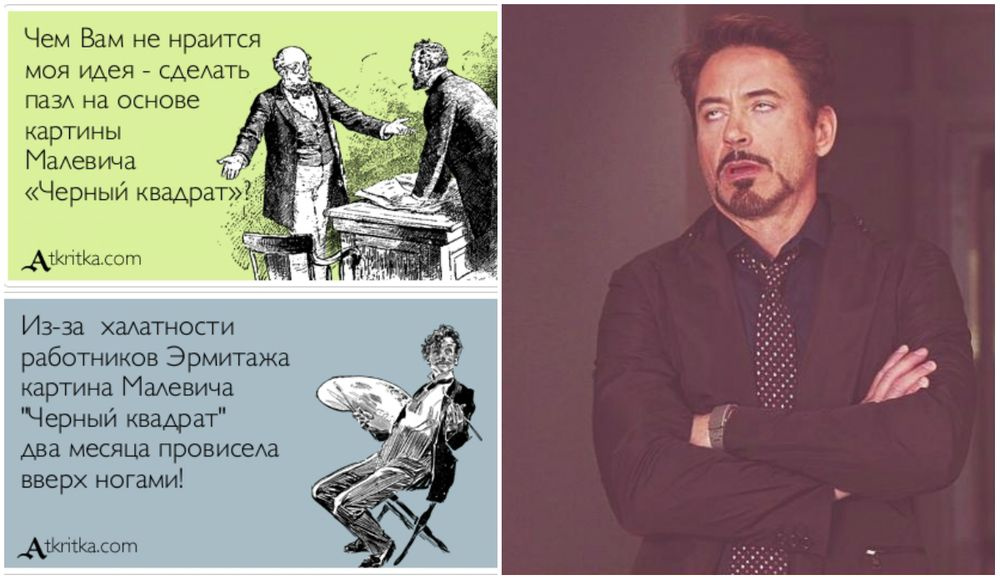
No one would ever notice if The Black Square were put upside down
That is another typical mockery arosen by utter ignorance. Malevich painted the objectless. The absolute. Nothing. The color deprived of content, "zero form". Obviously, The Black Square does not have its right, left, top, bottom, north, south, head or feet. It does not have anything at all. So it is simply impossible to hang it heels upside down.As per multi figured suprematic compositions, where the half-turn can be easily noticed, Malevich used to hang the same painting differently depending on the exhibition.
Had Malevich scrutinized paintings by Repin and Serov, he would not have found the reason to call them untalented brush pushers, but the forerunners of Suprematism, who introduced the black square to the canvas instead.
Serov and Repin had it done better
Partly it was Malevich himself who invited similar comparisons, when in a reformative ardor he named Repin as "untalented brandmeister" and Serov as "untalented brush pusher". Kazimir Severinovich was on friendly terms with the futurists then: brawling and shocking was considered to be a good tone in that environment. Eventually, as the artist have got a grasp of himself and the world order, Malevich renounced of not only the outmoded ideas about beauty, but also of the determination of "painting" as it is. He did not consider himself an artist and did not care whether his works will satisfy somebody’s aesthetic queries or not. His aim was not to make the world better, he tried to organize the new one. And The Black Square was a kind of brick or the foundation of the new world order. If someone regarded it to be beautiful to someone, it was its secondary effect in fact."There's nothing about painting in Suprematism, — Malevich wrote, — we got rid of painting long time ago, and an artist is the prejudice of the past".
Title illustration: Sergei plunging into The Black Square by Malevich (a shot from the advertisement of Tretyakov gallery, 2016).
Written by Andrew Zimoglyadov
Written by Andrew Zimoglyadov








